
The northern region of Europe has several definitions. A restrictive definition may describe northern Europe as being roughly north of the southern coast of the Baltic Sea, which is about 54°N, or may be based on other geographical factors such as climate and ecology.

The Baltic states or the Baltic countries is a geopolitical term encompassing Estonia, Latvia, and Lithuania. All three countries are members of NATO, the European Union, the Eurozone, Council of Europe, and the OECD. The three sovereign states on the eastern coast of the Baltic Sea are sometimes referred to as the "Baltic nations", less often and in historical circumstances also as the "Baltic republics", the "Baltic lands", or simply the Baltics.
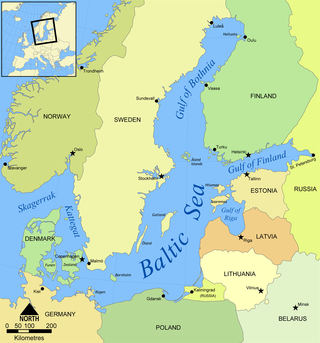
The Baltic Sea Region, alternatively the Baltic Rim countries, and the Baltic Sea countries/states, refers to the general area surrounding the Baltic Sea, including parts of Northern, Central and Eastern Europe. Unlike the "Baltic states", the Baltic region includes all countries that border the sea.

MS Estonia was a cruiseferry built in 1980 for the Finnish shipping company Rederi Ab Sally by Meyer Werft, in Papenburg, West Germany. It was employed on ferry routes between Finland and Sweden by various companies until the end of January 1993, when it was sold to Nordström & Thulin for use on Estline's Tallinn–Stockholm route. The ship's sinking on 28 September 1994, in the Baltic Sea between Sweden, Finland and Estonia, was one of the worst peacetime maritime disasters of the 20th century, claiming 852 lives. An official inquiry found that failure of the locks on the bow visor caused water to flood the car deck and quickly capsize the ship. The report also noted a lack of crew action. A 2023 investigation noted additional construction flaws in the bow visor.

Skogskyrkogården is a cemetery located in the Gamla Enskede district south of central Stockholm, Sweden. It was inaugurated in 1920 and was inscribed on the UNESCO World Heritage List in 1994. Its design, by Gunnar Asplund and Sigurd Lewerentz, reflects the development of architecture from Nordic Classicism to mature functionalism.
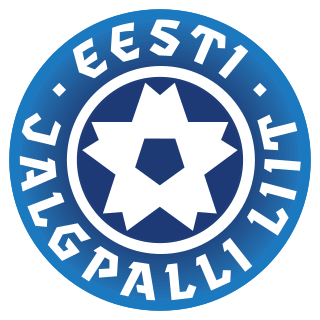
The Estonia men's national football team represents Estonia in international football matches and is controlled by the Estonian Football Association, the governing body for football in Estonia. Estonia's home ground is Lilleküla Stadium in the capital city Tallinn.

Kihnu is an island in the Baltic Sea. With an area of 16.4 km2 (6.3 sq mi), it is the largest island in the Gulf of Riga and the seventh largest island of Estonia. With a length of 7 km (4.3 mi) and width of 3.3 km (2.1 mi), the island's highest point is 8.9 metres (29.2 ft) above sea level.

European Heritage Days (EHD) is a joint action of the Council of Europe and the European Commission involving all 50 signatory states of the European Cultural Convention under the motto, Europe: a common heritage. The annual programme offers opportunities to visit buildings, monuments and sites, many of which are not normally accessible to the public. It aims to widen access and foster care for architectural and environmental heritage. These events are also known as Doors Open Days and Open Doors Days in English-speaking countries.
Ministry of Culture may refer to:

The Estonian Swedes, or Estonia-Swedes, or "Coastal Swedes" are a Swedish-speaking minority traditionally residing in the coastal areas and islands of what is now western and northern Estonia. During World War II, almost all of the remaining Swedish-speaking minority escaped from the Soviet invasion of Estonia and fled to Sweden in 1944. Only the descendants of a few individuals who stayed behind are permanent residents in Estonia today.
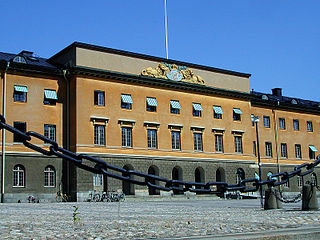
The Swedish National Heritage Board is a Swedish government agency responsible for World Heritage Sites and other national heritage monuments and historical environments. It is governed by the Ministry of Culture.
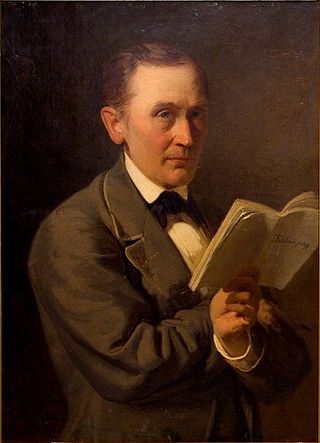
The culture of Estonia combines an indigenous heritage, represented by the country's Finnic national language Estonian, with Nordic and German cultural aspects. Over the centuries, the culture of modern Estonia has been significantly influenced by that of the Germanic-speaking world. Due to its history and geography, Estonia's culture has also been influenced by the traditions of the Baltic Germans and Scandinavians as well as the neighbouring Baltic, Slavic, and Finnic peoples.
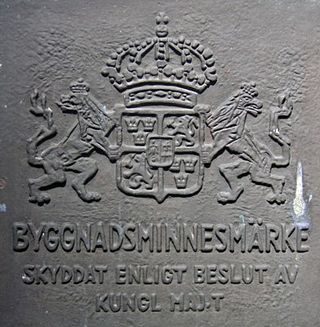
A listed building in Sweden enjoys the strongest legal cultural and historical protection available. Listed buildings range widely from Medieval castles to a cinema from the 1950s. The listing is not restricted to buildings per se; parks, gardens or other sites of cultural or historical significance are also protected by law. Listed buildings recount the passage of history and how Swedish society has changed over time. More than 2,000 buildings and sites have been protected as listed buildings in Sweden.

Gustavus Adolphus Day is celebrated in Sweden on 6 November in memory of King Gustavus Adolphus. Observing the day became popular after 1832, the 200th anniversary of the king's death in 1632. It is a general flag flying day in Sweden. Today it is mainly connected with the consumption of Gustavus Adolphus pastries. In Finland, the Finnish Swedish Heritage Day is celebrated on the same date.

Estonia, officially the Republic of Estonia, is a country by the Baltic Sea in Northern Europe. It is bordered to the north by the Gulf of Finland across from Finland, to the west by the sea across from Sweden, to the south by Latvia, and to the east by Lake Peipus and Russia. The territory of Estonia consists of the mainland, the larger islands of Saaremaa and Hiiumaa, and over 2,300 other islands and islets on the east coast of the Baltic Sea, covering a total area of 45,335 square kilometres (17,504 sq mi). Tallinn, the capital city, and Tartu are the two largest urban areas. The Estonian language is the official language and the first language of the majority of the population of 1.4 million.
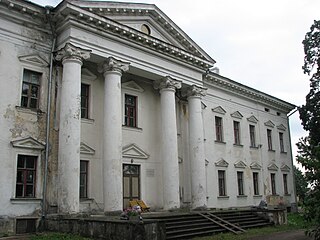
Udriku is a village in Kadrina Parish, Lääne-Viru County, northeastern Estonia, where the Udriku manor, a national architectural monument built in the early nineteenth century, is situated.
CMAS Europe is an organisation created expressly to represent the interests of Confédération Mondiale des Activités Subaquatiques (CMAS) within the European Union and in other parts of Europe by European national diving federations affiliated to CMAS.
Gunilla Elisabeth Paijkull is a Swedish football coach and former player. She was head coach of the Sweden women's national football team at the 1991 FIFA Women's World Cup.














